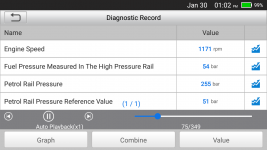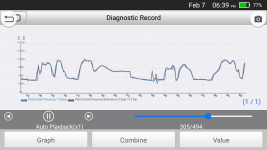Hi all,
A few weeks back I had the high pressure fuel pump go on my 207 GTI. This pump was not the original that came with a car, but rather a genuine new replacement from a few years back. The usual story of rough cold starts and the P0087 - so was swapped out for a known working genuine HPFP (not re-manufactured) and a fresh fuel filter. Car was driving beautifully for a week, but then the LTFTs start slowly drifting out towards -4% until a cold start flagged the code P0087 again. LTFT had blown out to between 8 to 10%. Seems to be the same series of events as the first pump.
I've scoured the internet for info regarding successive failures of the HPFP, but a lot of it seems to be people having bad luck with remanufactured pumps, etc. Before I chalk it up as a coincidence and go out and buy yet another HPFP, is there any known external causes for pump failure? Could the low pressure fuel pump contribute?
Cheers
A few weeks back I had the high pressure fuel pump go on my 207 GTI. This pump was not the original that came with a car, but rather a genuine new replacement from a few years back. The usual story of rough cold starts and the P0087 - so was swapped out for a known working genuine HPFP (not re-manufactured) and a fresh fuel filter. Car was driving beautifully for a week, but then the LTFTs start slowly drifting out towards -4% until a cold start flagged the code P0087 again. LTFT had blown out to between 8 to 10%. Seems to be the same series of events as the first pump.
I've scoured the internet for info regarding successive failures of the HPFP, but a lot of it seems to be people having bad luck with remanufactured pumps, etc. Before I chalk it up as a coincidence and go out and buy yet another HPFP, is there any known external causes for pump failure? Could the low pressure fuel pump contribute?
Cheers


